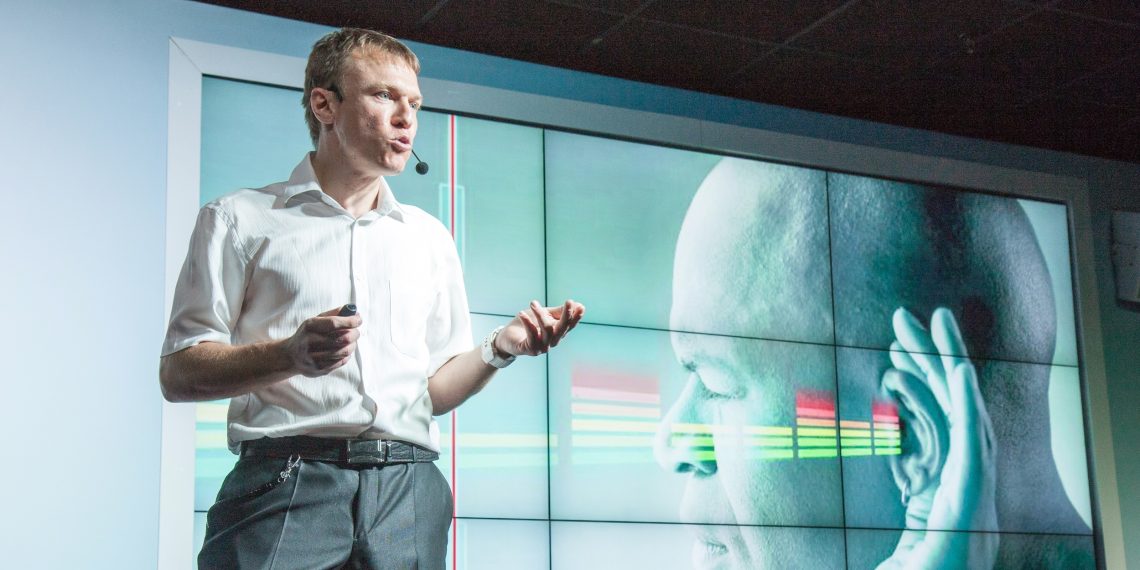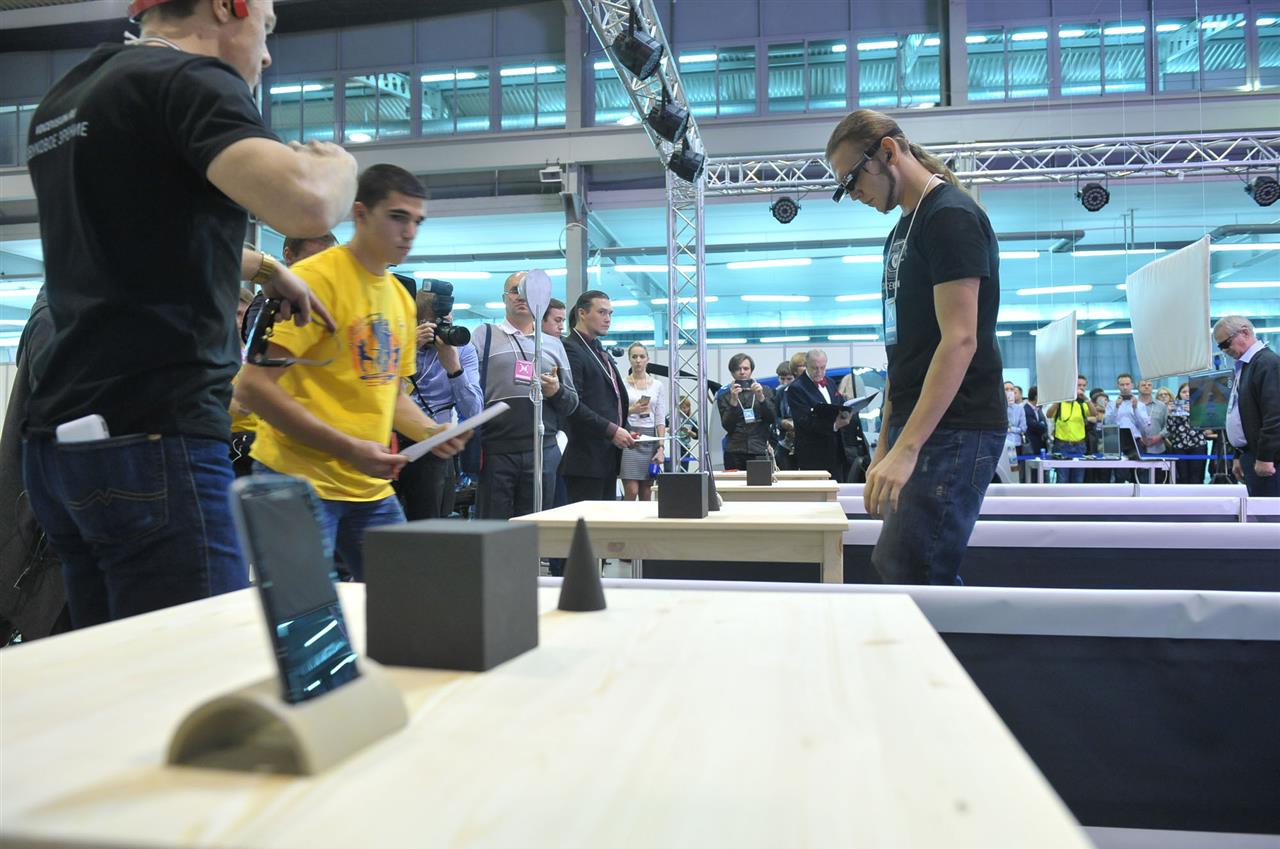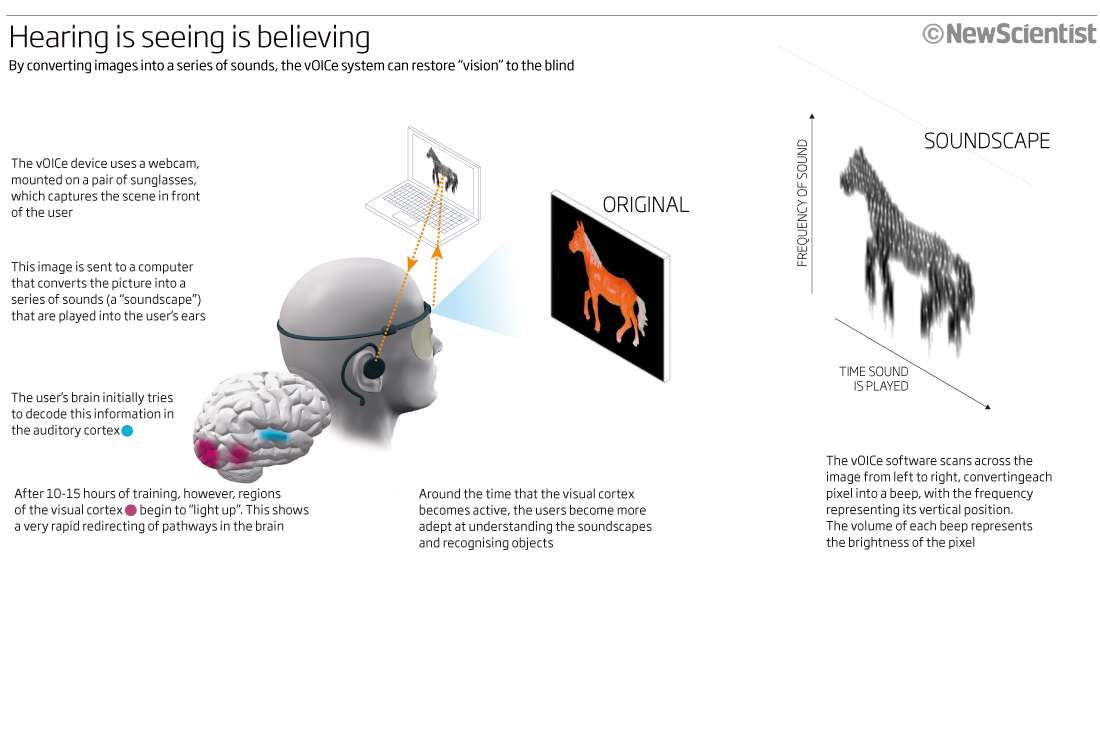Sensory replacement technologies will allow you to see the world with the help of sounds: how the neuroplasticity of the human brain works
Everyone knows that a person uses the five senses of perception to experience the surrounding space. As needed, he relies on one of them, now on several, and sometimes on all the senses at once, limited only by the laws of physics and his own physical capabilities.

And what will happen if you learn to circumvent these limitations? For example, to replace one feeling with another? Do not cross out, namely replace, reading the information from the two organs of perception, while using only one? It seems - something incredible. But this is exactly what the online course “Sound VOICe” teaches.
Such training for the blind and visually impaired was launched by the vOICe project team, creating devices capable of transforming the image of the surrounding world into a complex of sounds, with the help of which a person can see the world without using sight and tactile interaction.
')

In the photo: Blind Champion Neurotlon passes the test for the recognition of objects, 2018
This is achieved by transcoding the video signal, captured with a small high-resolution camera housed in vOICe glasses, into the soundtrack, which changes its sound depending on which objects and objects get into the focus of the camera.
To decode the picture sounds of various duration and height are used. A brighter part of the image is accompanied by a shorter and stronger signal, and on the side from which the object is located. If the object in the field of view is moving, then the signal is moving. Two separate objects are decoded by two signals, three by three, and so on. A long sound corresponds to a horizontal line, a vertical one is reproduced by a jerky signal of characteristic strength. Increasing the tonality of "neighboring" sounds means an obstacle, while the higher the tone - the higher the obstacle in front of a person.
The technology of "Sound Vision" is based on the mechanism of neuroplasticity of the human brain. This mechanism allows individual areas of the brain to change under the influence of experience, and also to restore lost connections after damage or to develop new connections.

Through the latter property, those parts of the brain that are responsible for hearing learn to convert sound signals into visual images. As a result, after a few weeks of training, a completely blind person begins to “see” at the level of the visually impaired, in particular, to distinguish between images and, over time, household items, signs with large print and the depth of space.
The mission of vOICe is the rehabilitation of blind people. But the opportunity to learn to replace one organ of perception with another is a tempting prospect for many. Therefore, the developers propose to teach the algorithm vOICe anyone. It is not necessary to be blind in order to master a device that can replace eyes at any time.
Even those who do not yet have such a device can study the sound vision algorithms. Having completed the virtual training, they will master the necessary algorithm and, if necessary, acquire and easily take advantage of the vOICe glasses.

For sighted people, the course will be a good test for attentiveness, as well as introduce scientists to the original design. In addition, learning to "sound vision", people will help the authors bring the curriculum to perfection by sharing their impressions and advice. And those who wish to support the developers and their project are invited to beta testing.
Currently, on the official website of the vOICe Project , two forms of training are available:
The course will be led by a clinical psychologist Svetlana Lebedeva. Training is conducted in the form of online conferences, with practice in the real world.
Those wishing to undergo training or learn more about the technology enough to place a request on the site or contact the developers .

And what will happen if you learn to circumvent these limitations? For example, to replace one feeling with another? Do not cross out, namely replace, reading the information from the two organs of perception, while using only one? It seems - something incredible. But this is exactly what the online course “Sound VOICe” teaches.
Such training for the blind and visually impaired was launched by the vOICe project team, creating devices capable of transforming the image of the surrounding world into a complex of sounds, with the help of which a person can see the world without using sight and tactile interaction.
')

In the photo: Blind Champion Neurotlon passes the test for the recognition of objects, 2018
This is achieved by transcoding the video signal, captured with a small high-resolution camera housed in vOICe glasses, into the soundtrack, which changes its sound depending on which objects and objects get into the focus of the camera.
To decode the picture sounds of various duration and height are used. A brighter part of the image is accompanied by a shorter and stronger signal, and on the side from which the object is located. If the object in the field of view is moving, then the signal is moving. Two separate objects are decoded by two signals, three by three, and so on. A long sound corresponds to a horizontal line, a vertical one is reproduced by a jerky signal of characteristic strength. Increasing the tonality of "neighboring" sounds means an obstacle, while the higher the tone - the higher the obstacle in front of a person.
The technology of "Sound Vision" is based on the mechanism of neuroplasticity of the human brain. This mechanism allows individual areas of the brain to change under the influence of experience, and also to restore lost connections after damage or to develop new connections.

Through the latter property, those parts of the brain that are responsible for hearing learn to convert sound signals into visual images. As a result, after a few weeks of training, a completely blind person begins to “see” at the level of the visually impaired, in particular, to distinguish between images and, over time, household items, signs with large print and the depth of space.
The mission of vOICe is the rehabilitation of blind people. But the opportunity to learn to replace one organ of perception with another is a tempting prospect for many. Therefore, the developers propose to teach the algorithm vOICe anyone. It is not necessary to be blind in order to master a device that can replace eyes at any time.
Even those who do not yet have such a device can study the sound vision algorithms. Having completed the virtual training, they will master the necessary algorithm and, if necessary, acquire and easily take advantage of the vOICe glasses.

For sighted people, the course will be a good test for attentiveness, as well as introduce scientists to the original design. In addition, learning to "sound vision", people will help the authors bring the curriculum to perfection by sharing their impressions and advice. And those who wish to support the developers and their project are invited to beta testing.
Currently, on the official website of the vOICe Project , two forms of training are available:
- Basic course "Sound VOICe Vision", teaching basic algorithms;
- Advanced course - for those who are ready to purchase vOICe Vision glasses and use them in business.
The course will be led by a clinical psychologist Svetlana Lebedeva. Training is conducted in the form of online conferences, with practice in the real world.
Those wishing to undergo training or learn more about the technology enough to place a request on the site or contact the developers .
Source: https://habr.com/ru/post/442680/
All Articles